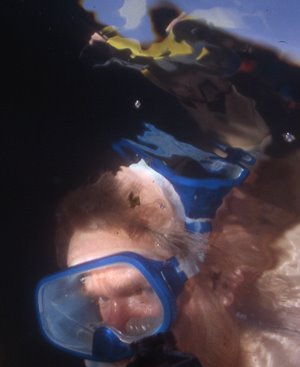Gaston's Phantom

I've seen most film adaptations of Phantom of the Opera, including the one in Chinese where the singer was a guy (The Phantom Lover, 1995), and I've seen no less than two musical theater adaptations, both of which sucked. So when I saw the original 1911 book by Gaston Leroux at the library, I picked it up out of curiosity. And d'you know what?
All the adaptations are better than the original. All of them.
This is kind of interesting. Cinema is known for destroying its original literary material, not improving it. And for a story that's been filmed so often to be improved even by the crudest adaptations is probably something like unique.
The reasons why the adaptations are better is actually kind of instructive. So allow me to instruct.
Most of the novel's problems have to do with plot. And Gaston shouldn't be blamed for all of them--- he was writing for serialization, which meant he was churning out the pages as quickly as possible, hurling ideas at the page, and because his pages were being serialized in a magazine, he couldn't go back and fix the story's problems, he had to fix them, as it were, on the fly.
There are other problems having to do with pacing. The progatonist doesn't protag. Even the substitute protagonist doesn't protag.
Let's start with the Phantom's name. It's Erik. Now Erik may be a fine name, but it's not a suitable name for a mysterious, murderous masked figure hanging out in the cellars of the Paris Opera. For that you want something more evocative, like Abelard or Alonzo or Geraldo or something with more sweep and dash.
And then there's Erik's job. He's a contractor. He builds stuff. He was one of the contractors on the Opera, and so he built his hidden passages and his secret mansion on the far side of the lake. That's pretty mundane.
There's also Erik's disfigurement. He was just born with it, and rejected by humanity, and became a bitter recluse. Beginning with the 1943 film, the disfigurement became something that was done to him, became a part of the action, and that made the disfigurement seem more like a part of the story.
Which brings us to the unmasking scene. Film versions sensibly save this for the end, to build maximum suspense, but the novel has it happen in the middle of the story and more or less throws it away.
The heroine is a problem. Christine Daae--- who is Swedish, by the way--- is beautiful and sings very well when her heart is in it, but let's face it, she's dumb as a stump. She thinks the Phantom is an angel sent by her dead father to teach her to sing. She knows that the Phantom exists, but doesn't connect her Angel with the Phantom. D'oh!
By the way, Christine keeps getting kidnaped by the Phantom. At least three times. And she begs and begs, and eventually he lets her go.
Which brings us to Raoul, the hero, who is totally inadequate to the job. He is described in the novel as small, effeminate, pampered, and very young. He's brave, and devoted to Christine, but he's also hopelessly stupid. He's so ridiculously unfit for the job of protagonist that, in one of those halfway-through-the-novel fixes demanded by the serialization schedule, Leroux provides a secondary hero known only as the Persian. The Persian is an old friend of Erik's, and knows a lot of his tricks, and thus gets Raoul close enough to the Phantom to fall into a whole series of Fiendish Death Traps with which the Phantom has surrounded himself.
In the end, both Raoul and the Persian are hopeless enough to be caught in one of the traps, and they are both captured by the Phantom. But Christine begs and begs, and eventually our heroes are set free. But Christine isn't done begging--- eventually the Phantom relents and lets her go, too, after which he dies of a broken heart alone in his stronghold.
The Phantom is a softy that way, at least when the plot calls for it, but also a diabolical murderer (when the plot calls for it). There's not a lot of consistency in any of the characters.
There's a lot of good material here, and some very interesting characters I haven't bothered to describe (like the Rat-Catcher), but it's all pretty formless, and it needed the cinema to beat it into shape. The masked figure of the Phantom, disfigured, embittered, and so in love with Christine that he kills anyone close to her, is just wonderful, and Gaston deserves four stars for him, along with his moody descriptions of the Opera and its workings, the terrific scene on the roof, the unmasking scene, and the idea of great evocative fortress of solitude on the far side of the opera's lake filled with fussy beaux-arts furnishings and a grand pipe organ . . . that's all pretty great stuff, and the film versions have made a point of keeping all that.
Cinema can't mess around. There's no time for the story to wander. And cinema also demands a climax--- you can't have as magnificent an antagonist as the Phantom facing a little wimp like Raoul, you've got to have a protagonist that's more capable, and that's what all the movie versions provide.
Gaston Leroux almost certainly wrote many better books--- his detective stories made him the Conan Doyle of France--- but I'm not sure he ever had a better idea. It's an idea that the movie's haven't forgotten.
Labels: Gaston Leroux, Phantom of the Opera

